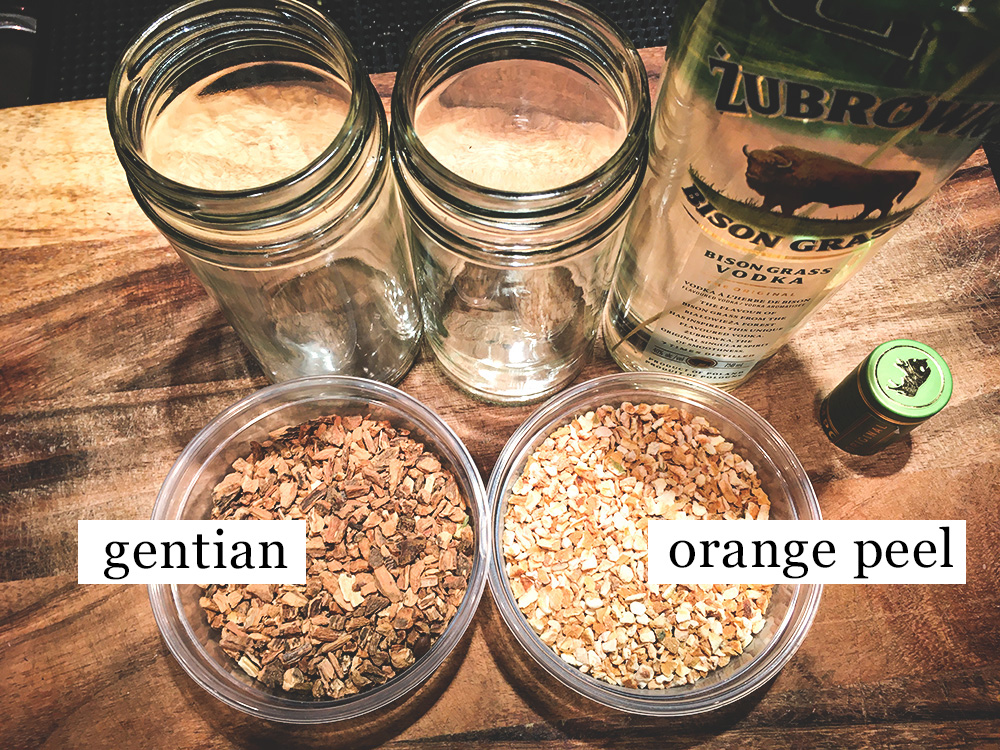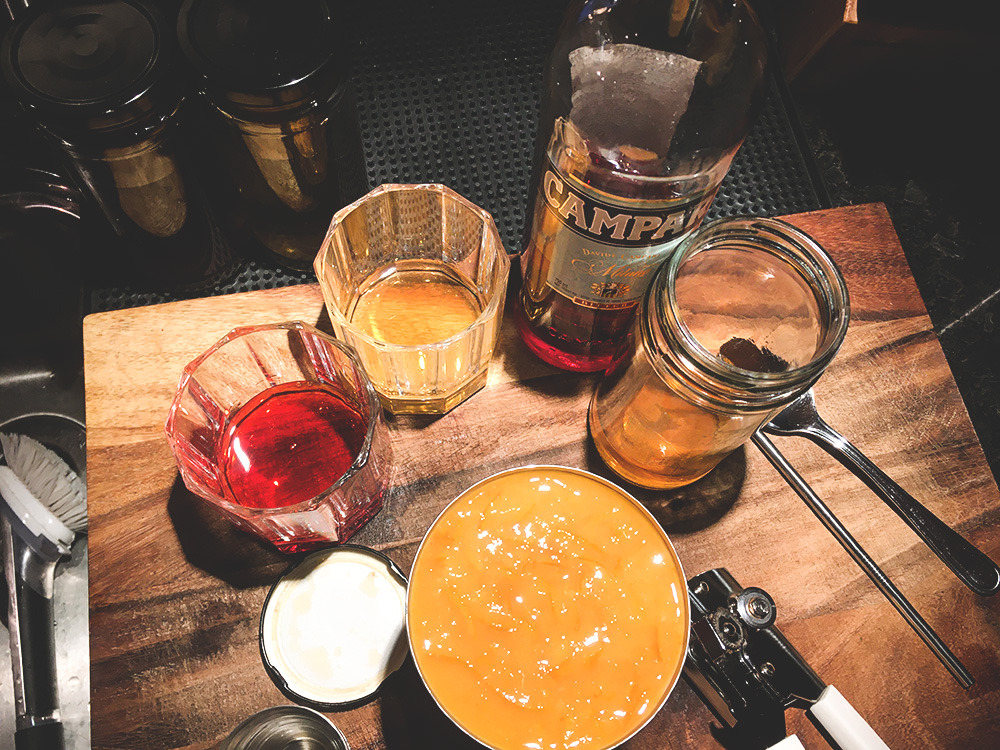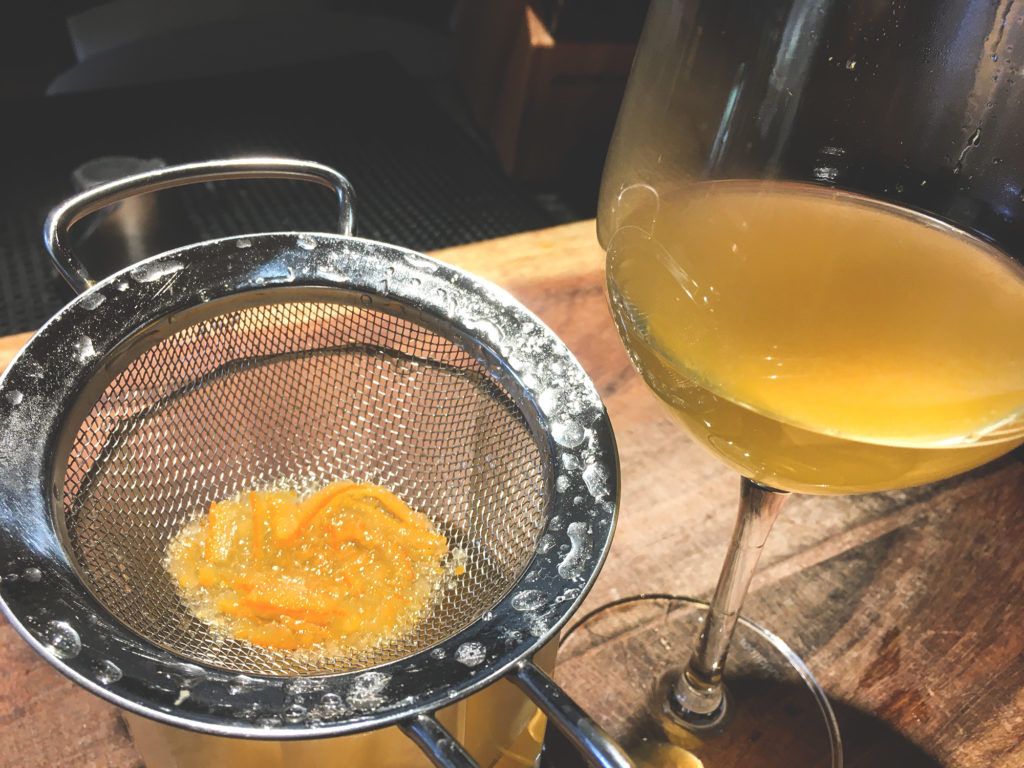If all roads lead to Rome (or Milan in this case)…this recipe is the ultimate easy shortcut; a 3 day experiment of palate and creativity to make my own Campari recipe.
One of my all-time favorite things in life is the challenge of matching, or in today’s lexicon “hacking” flavours; either by my colleagues during a slow shift, or for a guest. That can be using a cocktail to evoke nostalgia in a patron asking to taste a beloved childhood chocolate bar, or proving that “secret recipe” vermouths/liqueurs aren’t really that hard to mimic with the right techniques and patience tasting. It’s loads of fun and engages the brain to navigate memory, taste, smell and the innumerable amount of brain synapses to connect the dots.
I’ve scanned some other people’s attempts at this project…and it looks like what I had in mind was totally different from how other people went about it. Needless to say, if you enjoy complicated recipes and 15 ingredient mayhem please be my guest. I have been working with Campari for over 13 years now on a day to day basis, and I felt it really only needed 6 elements to be achieved.
These elements are:
| Fresh Bitter Orange | Dried Orange Peel | Gentian Root |
| Sugar | Vodka | Water |
…And no, I will not be crushing beetles for this! If you were about to call PETA without reading the rest, please, put the phone down. The cochineals are safe and sound. So let’s cut through the bullshit and fluff botanicals and get to the pithy center shall we?
(A quick primer for those asking what the hell are you talking about: Campari’s famous color until outlawed in 2006, came from cochineal beetles and the carmine dye released when crushing them)
Arguably one of the most flexible liquor products you can mix with; Campari has stunning depth and complimentary flavor that goes seemingly with everything. This seems strange though as it has always been polarizing with its dusty, bitter orange profile. But ask any bartender what bottle they reach for as a modifier to help along a struggling recipe or add a new layer of intrigue to a cocktail…chances are it’s Campari.
I honestly can’t count the number of times I’ve paired it with a random ingredient like cold brew coffee or even sriracha and it hasn’t shined through in its own weird little way.
The immediate inspiration that bumped this from my back burner was a recent Campari shortage in my home province of British Columbia. Our crimson beauty had been off of shelves for seemingly far too long and the public was growing restless.
Sure there are plenty of other options for Italian potable bitters; some companies have even tried to mimic Campari with their own signature red amari: Galliano, Martini & Rossi, and Luxardo all have a gentian based bitter orange aperitivo that closely resemble Campari…but alas there can only be one!
For years I’ve always wanted to tackle this challenge and wondered why more don’t improvise and then it became pretty clear once I started – bitter oranges are very hard to find in Canada.
This is the engine that makes this project go. We have access to navels, valencias, cara caras, mandarins, tangerines, clementines and blood oranges…but nothing like seville or chinotto oranges (which are the specific species – Citrus myrtifolia) that Campari actually uses. The chinotto fruit is also an extremely popular flavor in Italy as a non-alcoholic soda as well. I checked all the local markets and specialty import stores and could not find access to fresh or raw bitter oranges. In a last gasp of internet proximity searching, I found myself at the doorstep of Wal-Mart.ca and they had this:

Turns out there was enough demand from (the always underrepresented) marmalade enthusiasts to ask corporate to bring this in, and it was exactly what I needed. Raw, unprocessed seville oranges blitzed into a pulp with flesh & skins slivered in. This was the hard part of the shop list, the other “pillar” elements as I call them were gentian root and dried orange peel. These are fairly easy to track down from any herbalist or holistic health shop. If you can’t find vodka, sugar and water…you probably need to move.
My Campari Recipe: How To Make It

- Grab 2x 500ml Jars and fill one with 2 tbsp dried gentian root, and the other with 2 tbsp of dried orange peel. Tincturing them separately will also give you opportunity to re-use these in bitters experiments going forward.
- Fill both with 40% vodka of choice (pick something clean like a Russian or Polish vodka) I chose Zubrowka because it has a textural creaminess that will help with the viscosity matching of Campari.
- Shake and agitate in a cool dark place twice a day for 3 days
- After 3 days, strain tinctures of solids

- 5. Begin a smaller test batch before stretching to 750ml to ensure extraction & taste are there. Combine 1oz (30ml) gentian tincture with 1oz (30ml) dried orange peel tincture in a larger vessel. Add 1tbsp (15ml) seville orange mash and reserve the rest in a new container, freezer bag, etc. Whisk the mixture vigorously for 5 minutes or let sit to steep for an hour.

- Prepare a simple syrup which is just 1:1 sugar to water. For this small test batch we are going to need 4oz (120ml) of syrup which accounts for our dilution as well. Campari is 25% and for every 2 parts alcoholic tincture @ 40% we are doubling that (and some) with simple. Whisk again to incorporate and taste. *Depending on the vodka you pick, your sugar levels might fluctuate to attain the right texture – start with less, taste, then add*
- Strain pulp and skin slivers from mixture and color with red food coloring to desired hue
- Enjoy

A ratio driven approach for those who don’t want to make a full bottle:
- 1 part gentian tincture
- 1 part dried orange peel tincture
- 4 parts simple syrup
- ½ part seville orange mash
**Red food coloring to desired hue
Here is the easy math for a full 750ml bottle done for you:
- 4oz Gentian Tincture
- 4oz Dried orange peel tincture
- 16oz Simple syrup
- 4 Tbsp Seville orange mash (Let steep with mixture for an hour or stir vigorously for 5 minutes)
Red food coloring to desired hue
Obviously I can’t call this true Campari as I have no idea what other secondary/tertiary ingredients they use under their cloak…but I do know this now: Campari has a shit ton of sugar in it.
I started small with the simple syrup in increments when testing this test yield and was absolutely blown away with how many times I had to re-up with the sugar water to get my viscosity and taste right to offset the gentian. Again, this is a DIY and not a true researched recipe, but for 6 elements it is pretty damn close if you ask me. The fact that I blind tasted 3 of my most experienced colleagues on it and they all pinned it as Campari is enough credence for me that the recipe works. Dare I say, I actually prefer the subtle brightness of the seville mash over chinotto oranges? No, I probably shouldn’t commit career suicide here. Use this recipe only in emergency situations and buy Campari whenever you can.
Enjoy!








